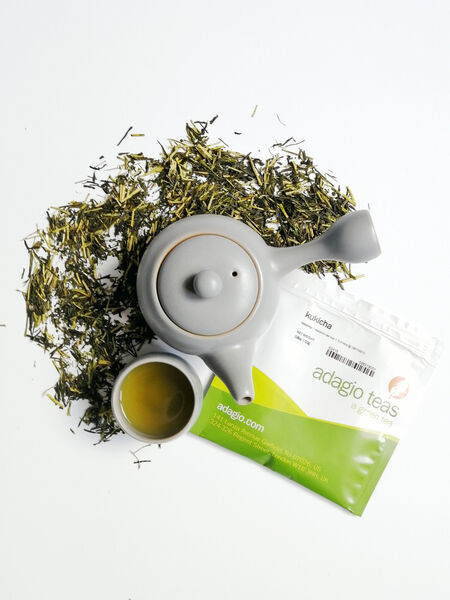Everything You Need to Know about Kukicha


Today I’m going to be starting a running series here on TeaMuse which is going to focus on exploring the world of Japanese tea. Each post will be a deep dive into a specific kind of Japanese tea, starting today with Kukicha.
My aim with these posts is to help people learn about the world of Japanese tea in a much more detailed way as I do often feel it can be a little overlooked compared to other well known tea growing regions around the world and it definitely needs the spotlight shining on it to highlight the amazing work that is being done all over Japan.
I’m relatively new to Kukicha and only tried it for myself for the first time about a year and a half ago but ever since I found out about it I have been on the lookout for new ones to try and have spent quite a bit of time learning about the processes behind it. I’m always more than happy to share the things I have learned about with others, especially if sharing my knowledge can help you learn about a tea you may have never tried before.
History
Surprisingly, while it seems almost every tea you can think of seems to have some sort of origin story (some having multiple) Kukicha doesn’t have one tied to it really. In fact Kukicha is rarely talked about at all, you never really seem to see it featured in the many tea books on the market and overall it is tremendously overlooked. In japanese, Kuki means Stem and Cha means tea so that is the origin of this tea's name. As you will find with a lot of Japanese tea names they really do explain everything you need to know about the tea you have.
Production
Well, Kukicha is actually produced using the leaves, twigs and stems left over from producing other teas. These parts of the plant are lower in caffeine, and generally produce lighter, sweeter and milder cups.
Just like all other teas, there are of course differing qualities of Kukicha the highest grades often being a by-product of producing teas like Gyokuro (which is called Karigane) and others are made from Sencha or Bancha. Adagio’s Kukicha, is made from Sencha, and has a tender quality to the texture, like soft white rice. Very balanced and, for a Japanese tea, very low in astringency and are much more suited to daily drinking.
Some Kukichas are roasted too which tends to transform the flavor profile as well just like it would a normal green tea. Kukicha really is a fantastic way to make the most of each and every harvest while providing drinkers with a whole new experience at the same time.
In Japan, Kukicha is often looked at as second grade and for that reason it is normally only enjoyed with family and not served to guests. Kukicha and Sencha actually go through very similar processes such as steaming, rolling or massaging, and drying. Once it has dried it is then separated by color as Sencha is a dark green while Kukicha is a lighter green and often there are a few different colour grades of Kukicha. I assume that at one point that process was definitely done by hand however these days it is almost always done by a machine to speed up the process.
Both the leaves and the steams have naturally occurring Theanine when the plant is exposed to sun, which transforms into Catechin which is a bitterness element. Because the stem clearly receives less sunlight than the tea leaves do, that is why Kukicha tends to not have anywhere near as much bitterness to it, if any at all really.
Hot Tea Preparation
When it comes to Kukicha, like a lot of other Japanese teas, the best way to prepare it hot is definitely in a Kyusu. Depending on the size of your kyusu you will want to use 4-8g of tea, your water should be at a temperature between 165-185°F and steeped between 2-3 minutes.
Unlike other Japanese green tea, Kukicha is much more forgiving to steeping time so while you still have to keep an eye on it you don’t have to be as strict with steeping times as you would have to be with a Sencha or Gyokuro.
Iced Kukicha Preparation
Kukicha also makes for a fantastic iced or cold brew cup as well which is perfect for any time of the day through summer.
For iced Kukicha you’ll want to use about 20g (around 4 tbsp) of the loose leaf and 1 liter of freshly filtered water at room temperature. Add the leaves to your jug and then pour on the water. Adagio's Airtight Iced Tea Pitcher would be perfect! Be sure to stir as much as you can, leave the jug at room temp for about 1-2 hours after doing so you’ll then want to put your jug into the fridge to continue steeping. The amount of time you choose to continue steeping in the fridge is completely up to you and down to personal preference, if you want a strong cup you can steep in the fridge for up to 12 hours.
Once it has steeped for long enough in the fridge pour it over ice and serve. You can also add in things like strawberries, sakura blossoms, mint or lemon among other things if you want to jazz it up a little but it is excellent on it’s own as well.
Whether you are a tea enthusiast or you are new to tea, I hope this post has helped you learn something new about this very underrated tea. Should you want to try Kukicha yourself you can find it over on the Adagio Website on its own or as part of the Japanese Teas Sampler.
